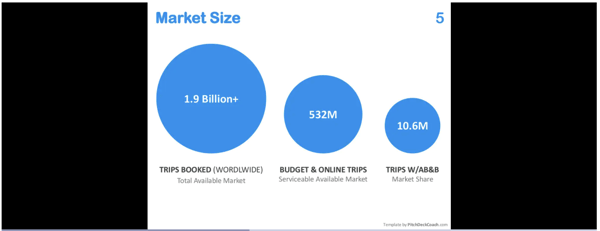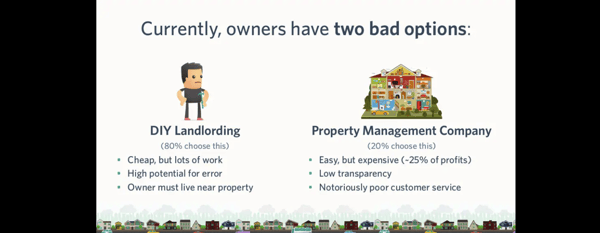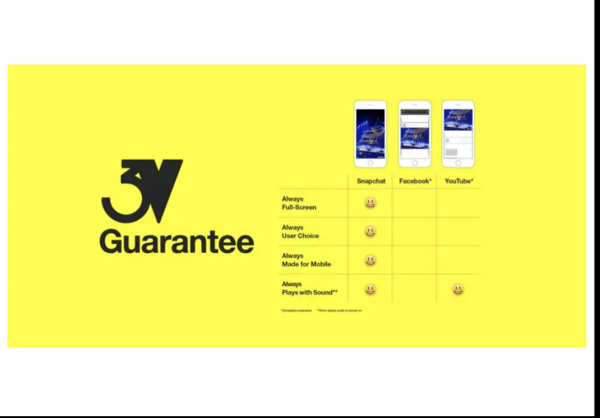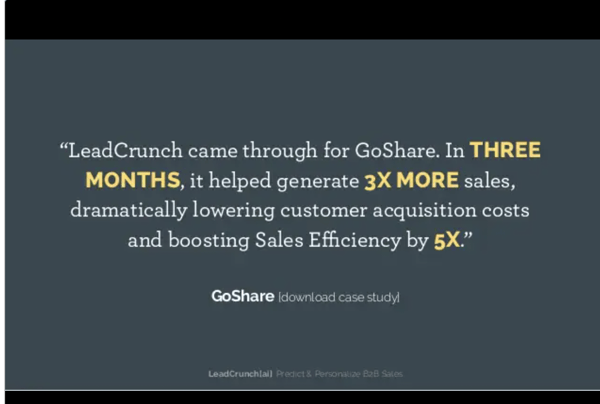
If you’re just starting a brand or business, one of the biggest challenges is getting people to care, especially when attention spans are short and competition is fierce.
You have a product, a vision, maybe even a killer logo, but how do you convince potential customers, partners, or investors to believe in it? This is where a marketing deck comes in.
A marketing deck is a short, visual presentation that introduces your brand, product, or service. It's used to pitch your idea to investors, partners, or customers by telling a clear story about your mission, value, and market opportunity.
Also known as a pitch deck, a marketing deck is a visual presentation that tells the story of your brand, product, or service in a clear, compelling way. It’s your business narrative, condensed into just a few slides, that helps you communicate value fast.
Whether you’re launching a D2C product, pitching your first investor, or introducing your brand at a networking event, a great marketing deck can be the difference between getting ghosted and getting a follow-up meeting. And the good news? You don’t have to be a designer to build one. With presentation software, creating a professional, persuasive deck is easier than ever.
Let’s break down exactly what goes into a marketing deck and how to make one that gets results.
Regardless of your niche, size, and industry, a marketing deck offers the following benefits:
To sum up, a well-thought-out marketing deck is a solid business asset for organizations looking to grow, whether through securing more funding or acquiring more customers and partners.
While the two are closely related and sometimes used interchangeably, they serve slightly different purposes and are used at different points in the buyer or investor journey.
| Marketing deck | Sales deck |
| Tells the story of your brand, product, or idea | Focuses on persuading a lead to buy or convert |
| Often used to build awareness and interest | Used later in the funnel to close the deal |
| Includes mission, problem/solution, market opportunity, traction, and goals | Highlights features, benefits, pricing, case studies, and ROI |
| Targets a broad audience (investors, partners, early users) | Targets a specific customer or decision-maker |
| Usually part of pitch decks, investor presentations, or brand intros | Part of sales enablement, demos, or product walkthroughs |
If you're still in the early stages of building your brand, focus first on a compelling marketing deck. It will set the foundation for all future pitches, conversations, and campaigns.
Getting your marketing deck right can make or break your business. For this reason, you need to understand the essential components of an effective one. Below is each component in detail, with sample slides from popular marketing deck designs to inspire you the next time you're about to pitch your business.
The first component in your marketing deck presentation should introduce your company, product, or service in one sentence. It's also important to state your unique value proposition (UVP) in this slide. Think of it as your power statement, and it should answer, "Who are you, and why should we listen to you?"
For this slide, don't forget to include your logo, phone number, and email address. The presentation below from Manpacks is a good example of an overview deck. Manpacks bagged a good round of funding using this presentation.
 Source: SlideShare
Source: SlideShare
This component should include your audience's demographics, market size, and market opportunity to succeed in the space. You can also highlight market validation, the process of determining whether there's truly a need for your product or service.
Take a look at Airbnb's marketing size and market validation slides when they were just starting.

 Source: SlideShare
Source: SlideShare
The third component highlights the actual problem that your product or service will address. In the sample slide below, Castle, a real estate startup, raised $270,000 using this marketing deck.
 Source: SlideShare
Source: SlideShare
This slide should answer the following questions:
If you can’t show you’re solving a real problem or pain point, your audience might lose interest in your presentation. A good practice when presenting a problem is to share a story.
You can further capture your audience’s attention by using visuals to explain complex issues. Finally, it also helps if you can illustrate how serious the problem is through data.
After sharing the problem you’re solving and the corresponding market opportunity, your next step is to spotlight your solution! Paint a picture of your unique value proposition and support it with relatable anecdotes and visuals like video clips, photographs, or even a physical demo of your product.
At this point, don’t get too caught up in describing your solution in detail. Instead, provide a higher-level overview of your solution. Here’s how LinkedIn did it back in 2004.
 Source: SlideShare
Source: SlideShare
This component will help validate whether or not your business model works. Focus on numbers that have contributed to your growth, like month-to-month sales figures, the number of app downloads, or your profit margins. The goal is to reduce any fear of risk in potential investors.
Take it from Single Music, a platform that allows artists to monetize their Spotify profiles.
 Source: Single Music
Source: Single Music
For this slide, list your competitors and how your product or service compares to them.
Pro tip: Always highlight your company’s unique competitive advantages over your competition. However, avoid belittling your competitors.
Look how Snapchat compares itself to other platforms in terms of advertising in this slide.
 Source: SlideShare
Source: SlideShare
After convincing your audience about the problem, the solution, and how your product or service is different from the competition, your next slide should answer the question: how will you market your solution, and how long will it take?
 Source: SlideShare
Source: SlideShare
This section of your marketing deck should answer:
You should be able to answer questions about your marketing funnel when presenting this slide.
A slide highlighting your financial forecast is one of the most crucial components of your marketing deck.
 Source: Pitch Deck Hunt
Source: Pitch Deck Hunt
Show your audience that you and your team can make money from your product or service. After all, investors and partners want to know if you can grow the funds they’ll invest in you.
Meanwhile, if your marketing deck is specifically for clients and customers, focus on how your product or service can help them save money in the long run.
For this section, highlight your core team members' domain expertise, skills, and success. Business partners and investors aren't just investing in your business; they’re also putting their trust in you and your team. You need to show them that the people behind the product or service are capable, sensible, and trustworthy.
 Source: SlideShare
Source: SlideShare
A better way to inspire investors' or customers' confidence is to let them know that other people like them trust you.
For this slide, show off the positive reviews and feedback you've received in media publications, social media, and review sites like G2. Bonus points if you can include feedback from recognizable brands and influencers in your niche.
 Source: SlideShare
Source: SlideShare
Finally, add your contact details (again!) to the final slide in your marketing deck. You can show this slide while answering your audience's questions about your presentation.
 Source: SlideShare
Source: SlideShare
Here are a few examples of effective marketing decks that you can use.
Andy Raskin, a strategic narrative consultant, shares several reasons why this presentation from Zuora is the "greatest sales deck" he has seen.
Source: SlideShare
These reasons are:
Leo Widrich, the co-founder of Buffer, writes how this marketing deck helped them raise half a million dollars. He spoke about how traction is one of the most important elements of a pitch, particularly if you're new to presenting your decks.
Source: Buffer
This deck by Velocity Partners, a B2B marketing agency, is a perfect example of a brand that isn’t afraid to break the rules.
Source: SlideShare
With 50 slides (the standard recommendation is to have 20 slides or fewer), this deck talks about the content marketing deluge and how brands can rise above the noise.
As a marketer, you have a lot on your plate. The good news is you don't have to make decks from scratch. Here are three templates you can edit and use:
Now that you already know the essential components to include, here are some helpful best practices for creating and designing powerful marketing decks.
The better you know your audience, the more likely you’ll tell a story or share information that truly resonates with them. For example, find out what kind of businesses they support and learn about their best practices. Learning more about your target audience is the first big step toward a great pitch deck.
Your deck should be easy to read and understand. Always use simple and legible fonts. The best fonts for presentations are bold and big enough to make them stand out from the rest of your text. However, don't overuse strong fonts. Glaring fronts hurt readability and aren't a good sight for sore eyes.
When creating a deck, you should know where you're heading. Each slide should answer:
An aimless presentation serves no good cause and is confusing for both your team and audience. When you know what you intend to convey with your slides, your audience also understands what to take home from it. You need to bring out the unique value with a defined purpose.
Your marketing deck presentation is like your brand ambassador. Your audience might take photos or screenshots of your slides to share or save for reference. Make sure the font, color schemes, and format of each slide in your presentation are consistent so that it's used as an example, not discarded as another convoluted graphic. Pitch decks with multiple fonts, color schemes, and backgrounds can often look amateurish and make you appear less trustworthy.
As with fonts, aim for simplicity throughout the deck. Avoid walls of text or even bullet points (a common practice) in your slides when possible. Use images or keywords that the audience can connect to while listening along. Simplicity enhances the overall customer experience by adding to the visual appeal. If your presentation is simple and naturally flowing, it will gain more real estate and attract a larger audience.
You have probably read about this best practice many times. It's thrown around a lot because it rarely fails. Sharing a story keeps people interested in what you have to say and can also help make your presentation more compelling. Regardless of the purpose, your decks should aim to create a brand story. It should answer the what, why, and how of your brand's values and how they relate to your customers.
Our brains favor visuals over plain text. This isn't just an observation, but a proven fact. Therefore, make an effort to use images, infographics, icons, graphs, and similar visual elements in your presentations. Also, remember not to overdo the graphics. Only use relevant visuals, and don't clutter your deck just because you think your audience will find them appealing. Too many visual or graphic elements can, in turn, impair readability and put the viewer off.
To build credibility, it's always good to reference every claim or statistic in your deck. All your sources should also be recent and up-to-date. A best practice is to quote only relevant facts and figures essential to support your argument or solution. Find a way to link them to the proprietary or original source.
Lastly, don't be afraid to break the rules! For example, your research tells you that because your audience loves to discuss growth strategies, you need to talk a lot more about traction than about how your product works! With this information, feel free to spend more time highlighting growth tactics in your decks. What's more important is that your deck presentation flows smoothly.
Most effective marketing decks have 10 to 15 slides, focusing on clarity over quantity. Each slide should deliver one key idea; your goal is to be concise, not crammed.
Absolutely. Marketing decks are versatile tools. You can use them for partner outreach, conference talks, recruiting, media kits, or even early-stage customer education.
Not necessarily. Tools like Canva, Pitch, and Beautiful.ai offer templates that let non-designers create sleek, professional decks without any design background.
Yes. Tailor your deck depending on who you're speaking to. Investors care about growth and ROI, while potential partners may care more about your vision, brand values, or distribution strategy.
Common mistakes include too much text, inconsistent branding, unclear messaging, and failing to tell a story. Avoid clutter, jargon, and skipping over the problem you solve.
If done right, a marketing deck aligns your story with your audience’s needs and positions your business as something worth believing in.
If you're just getting started, think of your deck as your first proof of concept. It forces you to define your value, test your narrative, and speak your brand into existence. That process alone is worth the effort, even before you pitch it.
Keep it simple, honest, and adaptable. Let it grow with your business. Most importantly, use it to spark conversations that move your brand forward, whether you're in the room with an investor or sending it as a follow-up to a networking call.
Need help creating your first deck? We tested the best presentation software to understand
This article was originally published in 2021. It has been updated with new information.
Kai Tomboc is an experienced content designer and writer on all things healthcare, design, and SaaS. She used to be a nurse and a telemarketer in her past lives. She lives for mountain trips, lap swimming, books, and conversations over beer.
Traditional marketing professionals were expected to be a natural at creating and delivering...
.png) by Tim Ferguson
by Tim Ferguson
The world is a never-ending slideshow reel.
 by Jasmine Lee
by Jasmine Lee
We need to move past age-old pie charts and scatter plots to present data.
 by Alexandra Vazquez
by Alexandra Vazquez
Traditional marketing professionals were expected to be a natural at creating and delivering...
.png) by Tim Ferguson
by Tim Ferguson
The world is a never-ending slideshow reel.
 by Jasmine Lee
by Jasmine Lee


